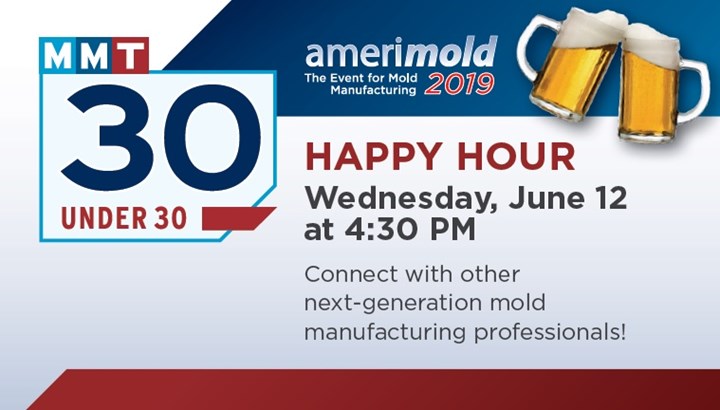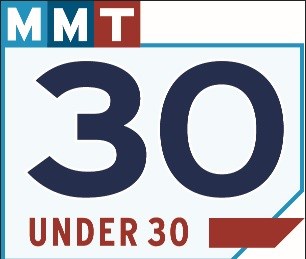Challenges, Opportunities and Solutions for Emerging Moldmaking Leaders
Young professionals at the American Mold Builders Association (AMBA) 2019 Conference sat down to discuss the challenges facing them in the industry, as well as identify opportunities and solutions to meet those challenges head on.
Moldmakers know workforce development is one of the key challenges facing the industry today, which is why it was encouraging to see not only new faces, but young ones at the American Mold Builders Association (AMBA) annual conference in Itasca, Illinois. While these young faces were attending the conference to gain insights on industry trends and strategies, they had also been invited to join the AMBA’s Emerging Leaders special pre-conference session focusing on the challenges faced by young professionals in the mold building industry.
If you are not familiar with the AMBA’s Emerging Leaders, that is because the group is relatively new, and this meeting at the conference was the very first of its kind. Emerging Leaders is currently made up of over 40 members, all under the age of 40, across 30 AMBA member companies from across all areas of business. It aims to bring together “innovative, creative and dedicated young professionals” and focus on building relationships between them.
As MoldMaking Technology’s resident young person, I had the opportunity to sit in on this three-hour session before the start of the AMBA conference. Attendees were able to network among themselves, as well as engage with three established mold building professionals—Andy Baker, strategic account manager at Bryne Tool and Design; Jeff Lucas, manager of project management at Minco Tool; and Chuck Klingler, vice president and owner of Janler Corporation—through a Q&A panel.
However, the greatest takeaways from this session were the peer-to-peer roundtable discussions, where these young professionals sat down to talk about three questions on the challenges, opportunities and solutions facing the industry, their individual companies and their own careers. Here are some highlights from their discussions:
What are the challenges that exist in your workplace that prevent your organization from growing/moving forward?
Culture change and an aging workforce were the biggest challenges almost everyone in the session commented on. The young professionals in the session agreed that they want to work for companies that respect employees and want to see them excel and succeed. They had all heard some form or other of the statement, “Things have always been this way, why change?” They do not want to work for a company that is resistant to change. The industry itself is changing, so they want to be a part of the influencing factors leading the charge into new advancements and ways of getting work done.
Going hand in hand with culture change is then finding not just good people to fit into the new culture, but the right people. Changing policies and the way things are done within a company can be a step in the right direction, but without the right people to promote the changes being implemented, those changes become ineffective.
Another challenge that came up was transitioning knowledge from seasoned professionals to younger ones. As they make their way further into the industry, young professionals find they are refused important knowledge because they have not “earned” it as established mold builders have. Emerging Leaders attendees showed in the session that they are eager to learn all they can about their jobs, and when someone does not want to collaborate with them, it has caused frustration because they want to succeed in their careers.
Other challenges that came out in the session were communication issues, keeping up morale, succession planning and managerial skills development.
What opportunities could you identify that would allow you to become a better leader/stronger employee in your organization?
It shouldn’t be surprising for an industry with such a tight-knit community that the top answer was to learn from one’s peers. Conferences, tradeshows, networking events like the Emerging Leaders pre-con session—all of these and more were answers to build connections and relationships across the industry, and not just within one’s own age group. By making themselves known at industry events and becoming part of the community, a young professional could share best practices and strategies and improve their leadership capabilities.
Another opportunity was to stop being the one to always put out fires. Instead, let one’s team handle them. If a leader is always the one fixing issues, the team won’t learn and grow from their own mistakes. When they do learn from a past mistake, acknowledge it, and encourage other team members to give credit where credit’s due. Recognition should come from all sides, not just the top, if a leader wants to foster a cohesive team atmosphere.
Other leadership opportunities involved creating an open-door policy that facilitates employees and leadership working together, asking for more responsibility within the company and even knowing when to weed out those who no longer fit within the company culture.
What are some solutions you can take away today that can be implemented tomorrow?
One theme that rose to the top was to be accountable for one’s own career development within this industry. Young professionals should reach outside of their comfort zone and take initiative to ask for opportunities where they can grow and improve their skills and abilities. Not only should they continuously educate themselves, but they should keep their minds open to change and development. They should take the time for self-reflection and ask themselves what they want. Do they want to be a better leader? What are ways they can go about becoming one? What goals do they have for the company? What personal goals do they have within the company? No one is going to look at them and hand over leadership opportunities without the young professional first putting in the effort to show they are up for the responsibility.
From implementing monthly lunches for employee morale to recruiting at elementary school levels for evening out the industry age gap, the Emerging Leaders session brought about many great solutions to the challenges young professionals are facing today.
Anyone interested in joining the AMBA’S Emerging Leaders group, or who knows a young mold building professional who fits the criteria, can find more information about the group here.
Related Content
How to Improve Your Current Efficiency Rate
An alternative approach to taking on more EDM-intensive work when technology and personnel investment is not an option.
Read MoreTackling a Mold Designer Shortage
Survey findings reveal a shortage of skilled mold designers and engineers in the moldmaking community, calling for intervention through educational programs and exploration of training alternatives while seeking input from those who have addressed the issue successfully.
Read MoreThe Role of Social Media in Manufacturing
Charles Daniels CFO of Wepco Plastics shares insights on the role of social media in manufacturing, how to improve the “business” side of a small mold shop and continually developing culture.
Read MoreConfronting the Mold Design Talent Drought
Recently, I reposted on LinkedIn the results of an informal survey we conducted, which revealed a shortage of skilled mold designers. It quickly gained a lot of traction. Given the response, I thought I'd summarize the feedback and keep the conversation going.
Read MoreRead Next
How to Use Continuing Education to Remain Competitive in Moldmaking
Continued training helps moldmakers make tooling decisions and properly use the latest cutting tool to efficiently machine high-quality molds.
Read MoreAre You a Moldmaker Considering 3D Printing? Consider the 3D Printing Workshop at NPE2024
Presentations will cover 3D printing for mold tooling, material innovation, product development, bridge production and full-scale, high-volume additive manufacturing.
Read MoreHow to Use Strategic Planning Tools, Data to Manage the Human Side of Business
Q&A with Marion Wells, MMT EAB member and founder of Human Asset Management.
Read More













.jpg;maxWidth=300;quality=90)










